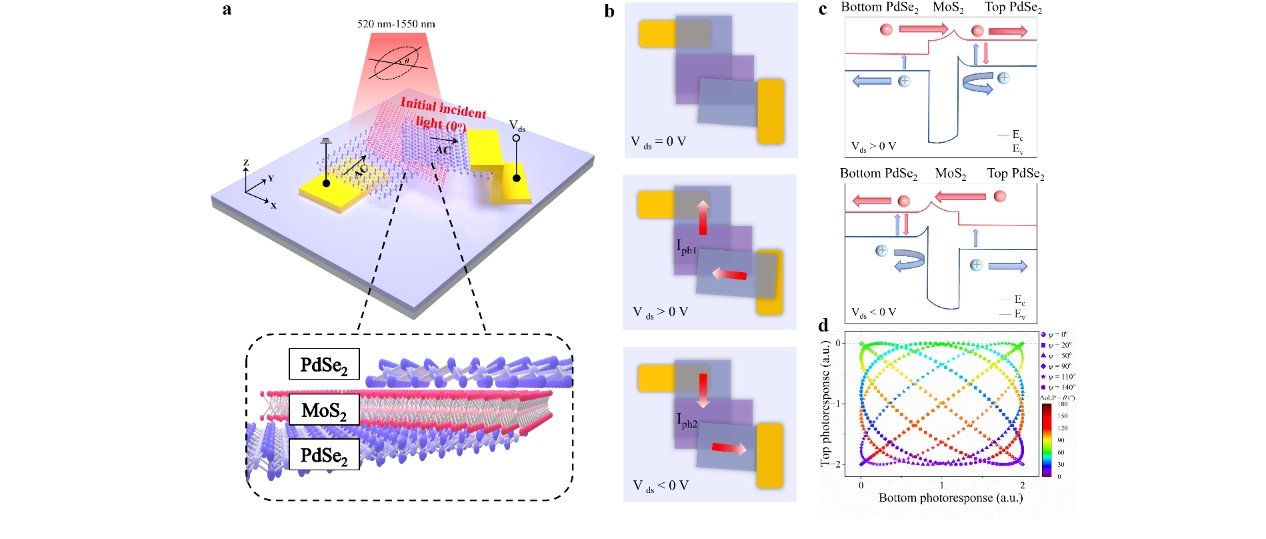
Polarization, along with intensity, wavelength, and phase, is a fundamental property of light. It enhances contrast and resolution in imaging compared to traditional intensity-based methods. On-chip polarization devices rely on complex four-pixel arrays or external polarizers. Current solutions face two key challenges: limited spectral response in plasmonic and metasurface-based devices, and difficulty in simultaneously detecting the angle (AoLP) and degree (DoLP) of linear polarization in low-dimensional anisotropic materials. Achieving wide-spectrum, high-precision polarization detection remains a critical challenge in the field.
To address this, a research team led by Prof. LI Liang from the Institute of Solid State Physics, the Hefei Institutes of Physical Science of the Chinese Academy of Sciences, in collaboration with Prof. ZHAI Tianyou from Huazhong University of Science and Technology, has developed a novel "torsion unipolar barrier heterojunction" device.
Their findings were recently published in Advanced Materials.
This innovative device utilizes the unique anisotropic photoelectric properties of two-dimensional PdSe₂ to construct a dual absorption layer while fine-tuning the energy band of the intermediate MoS₂ barrier layer. This design enables bias-programmable control over carrier transport paths, leading to groundbreaking performance.
The device features two key advancements: Bipolar photocurrent behavior at zero bias, allowing direct decoding of polarization-encoded bi-binary communication signals. Elimination of the need for auxiliary polarizers, enabling real-time, simultaneous measurement of AoLP and DoLP, overcoming the limitations of traditional four-pixel arrays.
This research offers a fresh perspective on next-generation on-chip polarization detectors, simplifying device structures while enhancing optical information processing, according to the team.

Schematic diagram of optical carrier transmission in PdSe2/MoS2/PdSe2 vdWH. (Image by MA Xiaofei)